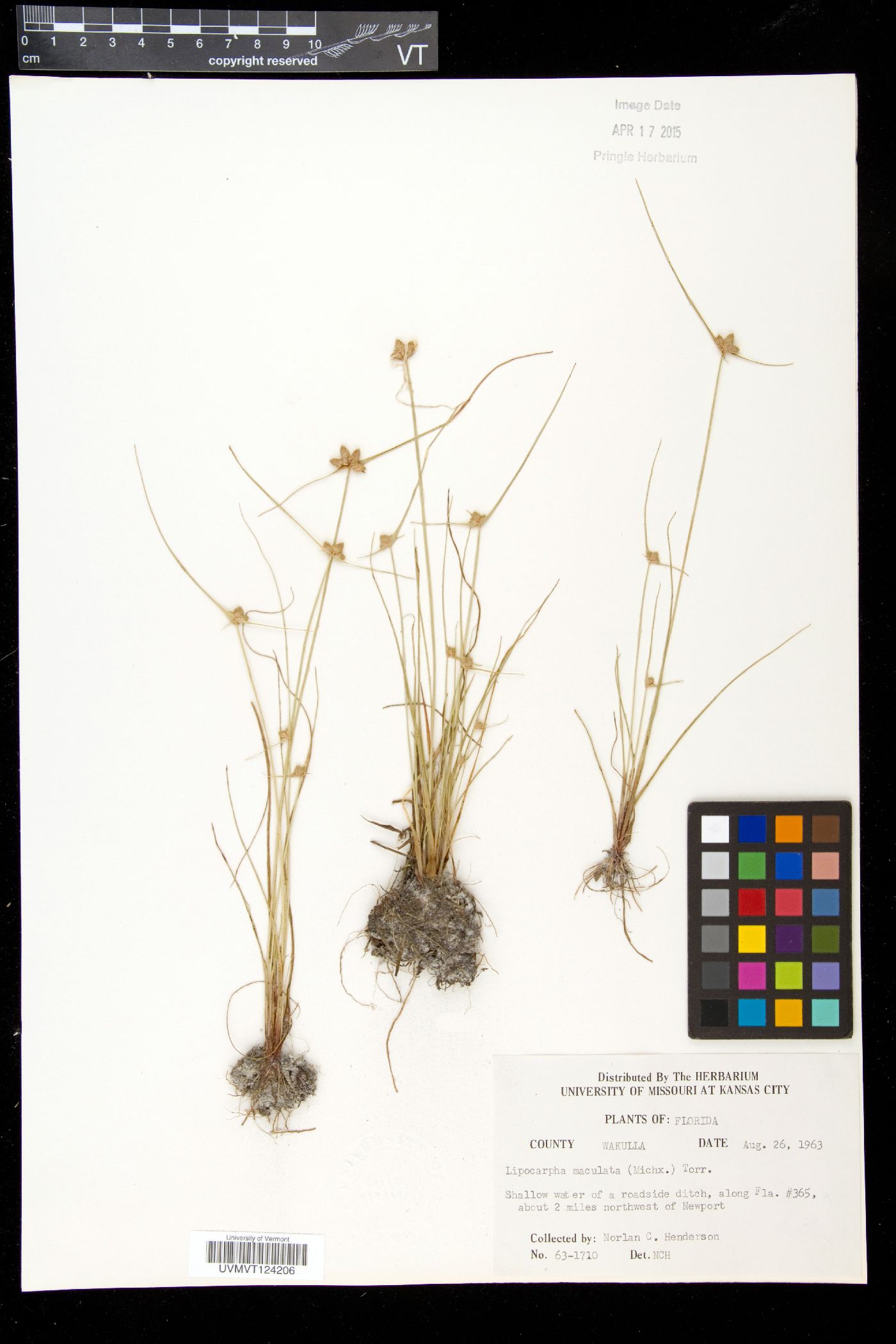Lipocarpha
|
Family: Cyperaceae |
Herbs, annual [rarely perennial], usually densely cespitose, not rhizomatous. Culms solitary or not, terete. Leaves basal, proximal bladeless or with involute appendage, distal with distinct blade, glabrous; ligules absent; blades setaceous to involute or flat. Inflorescences terminal, sometimes pseudolateral, ovoid clusters of spikes, spikes 1-4; spikelets [20-]50-150 per spike; involucral bracts 1-4, spreading or erect, leaflike. Spikelets: scales (1-)3, spirally arranged, 1 scale subtending flower, others empty. Flowers bisexual; perianth scales 1-2; stamens 1-2; styles linear, 2-3-fid, base deciduous or persistent, thickened or not. Achenes trigonous or terete. The morphology of the inflorescence has received various interpretations. One suggested that the inner transparent scale represents five perianth members that correspond to the bristles subtending the achenes in some species of Scirpus (S. Friedland 1941). Another proposed that Lipocarpha is a highly reduced derivative of a Cyperus-like ancestor (J. Raynal 1967); that view was accepted by G. C. Tucker (1987) and P. Goetghebeur and A. Van den Borre (1989). The shared feature of Kranz anatomy of the 'Cyperus type' further strengthens Raynal´s proposal. The achene and subtending scales of Lipocarpha are thus homologous to a single spikelet of Kyllinga or Cyperus. The interpretation of the secondary scales of Lipocarpha (Hemicarpha) as reduced scales of a spikelet (J. Raynal 1967) appears more plausible than the view of the secondary scale as fused perianth members (S. Friedland 1941). Lipocarpha drummondii and L. aristulata have been frequently confused and misidentified as each other or as L. micrantha. Reports of those species, or their synonyms, should be confirmed by examining supporting specimens. Lipocarpha squarrosa (Linnaeus) Goetghebeur, a native of southern Asia, is known as an adventive from the Gulf Coast of Florida; it is not included in the species count. It has subtrigonous achenes and three stigmas, and it would seem to key to L. maculata in the following key; however, it is a smaller plant, at most 20 cm tall, with anthers only 0.15-0.2 mm and achenes 0.4-0.55 mm.
Scales spirally imbricate, ±scarious; fls perfect, each in the axil of a scale and also subtended by an additional pair of hyaline scales, one adaxial and persistent on the rachilla, the other abaxial and deciduous with the achene; stamens 1 or 2; style bifid or trifid; achene subtrigonous or lenticular; infl a terminal head of 3-several spikelets subtended by 2 or 3 foliaceous bracts. ±12, mainly trop. Gleason, Henry A. & Cronquist, Arthur J. 1991. Manual of vascular plants of northeastern United States and adjacent Canada. lxxv + 910 pp. ©The New York Botanical Garden. All rights reserved. Used by permission. |

